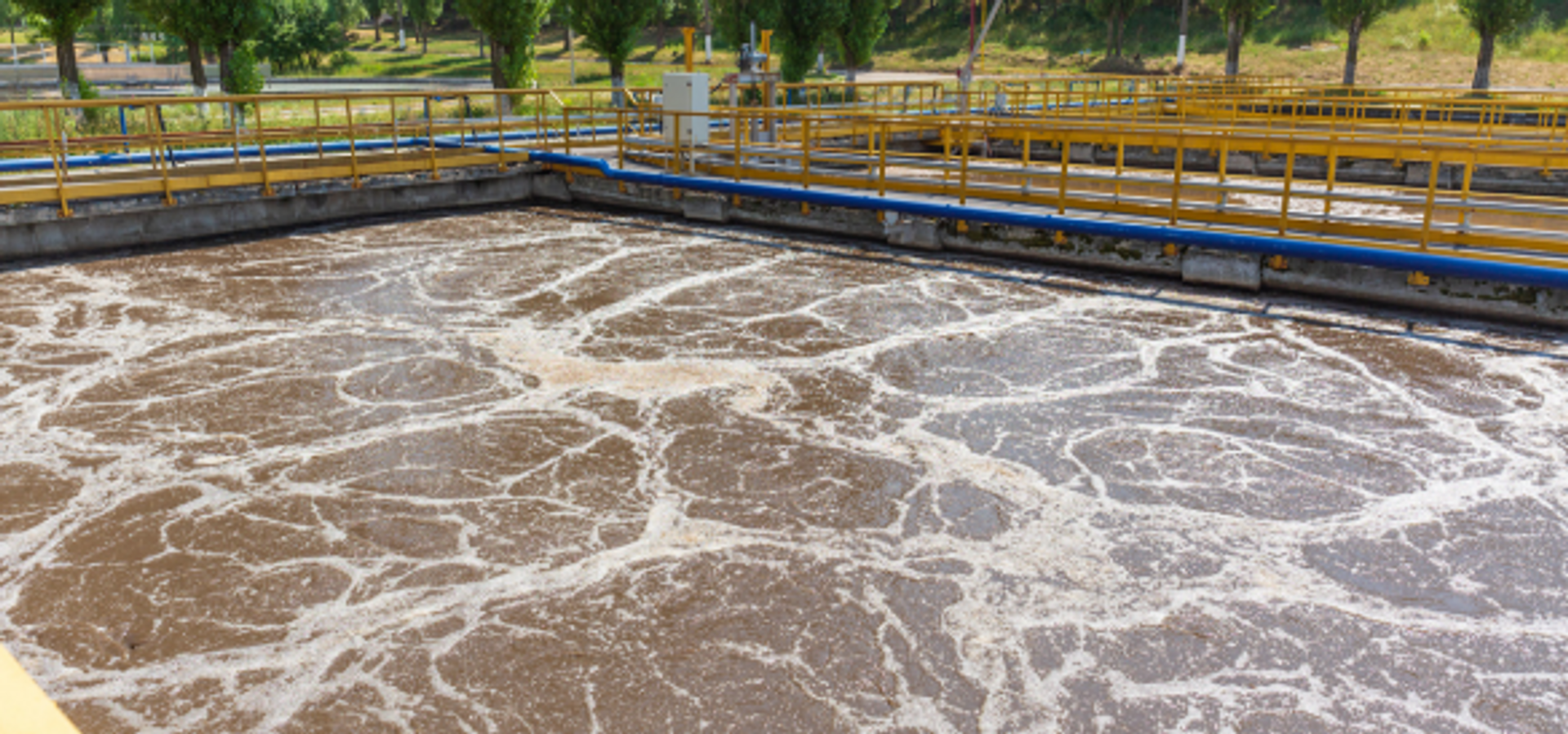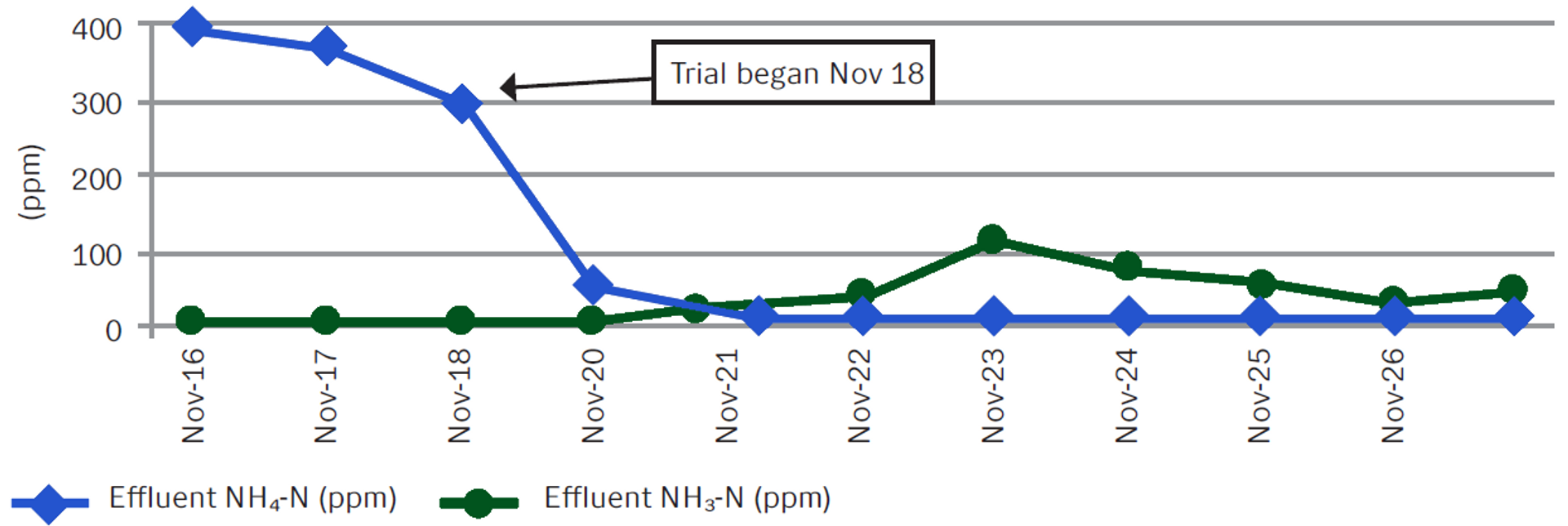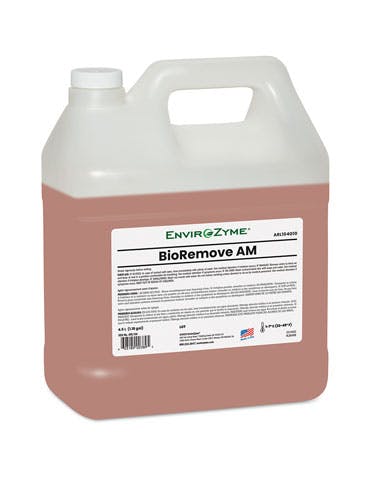
Effluent Ammonia Reduced by 97.5%
The application of BioRemove AM at an activated sludge plant brought the facility into compliance to meet effluent quality standards.
Benefits
- Improved plant efficiency by reducing effluent ammonia by 97.5%
- Simplified operations by providing an easy-to-use solution
Background
A chemical plant operates a 7,600 m3/d (2.0 MGD) activated sludge plant designed for nitrogen removal. The influent ammonium (NH4-N) concentration of the plant ranges from 200-800 ppm. Effluent organic removal and a 30 day sludge age normally supports a healthy nitrifying bacterial population. Nitrate (NO3-N) removal occurs anoxically in a basin where the return sludge and a portion of the mixed liquor circulate.
Following a plant upset, effluent NH4-N levels surpassed 400 ppm causing acute non-compliance with the discharge permit. EnviroZyme was contacted to determine if seeding with BioRemove AM could re-establish nitrification.
Application
A recommendation to seed the aeration basin with EnviroZyme nitrifiers and raise the basin pH and alkalinity with caustic soda was implemented. Although the basin pH was not responsible for the loss of nitrification, a low basin pH of 6.1-6.5 could have hindered the recovery process. At that pH, it was evident that the alkalinity may not have been sufficient to prevent a nitrate-induced reduction in pH that occurs when nitrification is established. Since nitrification requires a theoretical 7.14 ppm of alkalinity per ppm of NH4-N oxidized to NO3-N, a restart could easily drop the pH to below 6.0 and completely inhibit a full recovery.
Results
BioRemove AM was added to the aeration basin over a ten day period, in addition to raising the mixed liquor pH to 7.7. During this period, the effluent NH4-N decreased by 97.5% from 397 to 10 ppm.

At the same time, effluent NO3-N increased from 0 to a peak of 135 ppm, then back down to 101 ppm as the denitrification rate responded to increased NO3-N production. The mixed liquor pH was gradually allowed to drop to the 6.5-7.0 range that had historically supported nitrification, thereby eliminating the need for continuous caustic addition.
Conclusion
EnviroZyme's biological program was easy to implement and provided significant benefits over other alternatives. BioRemove AM resulted in:
- Lower operating costs
- Improved plant efficiency
- Simplified operations
